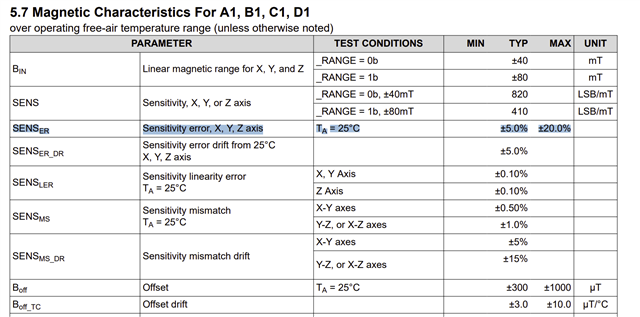Tool/software:
I am trying to use two of these hall-effect sensors to distinguish a few different magnetic states, but I'm concerned with the accuracy of the sensor.
I am struggling to understand what the sensitivity error is referring to. Is it a percentage error from the true magnetic reading? For example, if I read a value of 60 mT and since the maximum sensitivity error is ±20%, the value read could be between 48 and 72 mT.
That's a very large range, and makes it difficult to distinguish between magnets. Is this how the sensitivity error should be interpreted, assuming all other sources of error are ignored?

